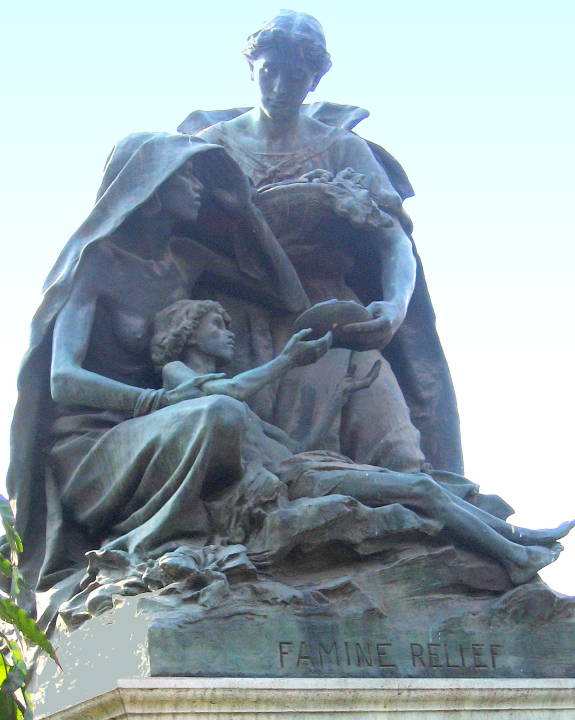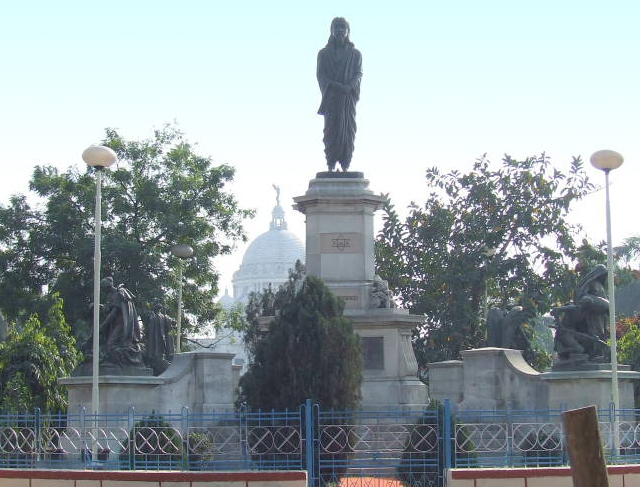
(Former) Curzon Memorial by Sir W. Hamo Thornycroft, R. A. (1850-1925). Unveiled in Calcutta: 8 April, 1913. Bronze, cast” by Singer's Foundry. P




Left to right: (a) Commerce. (b) Agriculture. (c) and (d) Famine Relief.
The original monument to George Nathaniel, Earl Curzon of Kedleston (1859-1925), Viceroy of India, was commissioned from Hamo Thornycroft in 1911, for a memorial similar in layout to the Gladstone monument in the Strand: a standing figure in the center with four groups of attributes surrounding it, and, for intents and purposes, this is still what you have except.
After Independence from Britain, the Indians, having no further interest in an ex-Viceroy, have removed Curzon himself and replaced him with Sri Aurobindo (born Aurobindo Ghose (15 August 1872-5 December 1950), Indian nationalist, freedom fighter, philosopher, yogi, guru, and poet. The attributes remain, which might imply that the Indian nationalists who appropriated the Curzon memorial believe they apply to Aurobindo as well. Unfortunately Mary Ann Steggles does not state whether Curzon was simply removed from the group and Aurobindo inserted, or whether this is a new arrangement of the material in a new place altogether.




Left to right: (a) A view from the front with a rather static backlit statue of Sri Aurobindo. (b) The figure of a young boy from “Agriculture.” (c) The figure of a young boy from “Pax.” (d) Peace.

Bronze plaque depicting be-turbaned “[Officer?] Cadet Corps.
The statue of Curzon is now in the statuary holding area, similar to the State Museum in Lucknow, in the Old Flagstaff House at Barrackpore. My friend and I wanted to get to Barrackpore to see the holdings there, but it was Constitution Day weekend and everything was shut.
Exhibited: Peace [Steggles misnames it Maternal Bliss, but, the group is marked Pax], Agriculture and Famine Relief were exhibited at the Royal Academy in 1913. The complete group in plaster, including the central figure was exhibited at the Royal Academy in 1914.
Related material Including Other Work by Thornycroft in India
- British India (homepage)
- British Calcutta (homepage)
- Queen Victorian (Ayodhya)
- Queen Victorian (Lucknow)
Photographs by the author and Simon Stock. [You may use this image without prior permission for any scholarly or educational purpose as long as you (1) credit the photographer and (2) link your document to this URL in a web document or cite the Victorian Web in a print one.]
Bibliography
Steggles, Mary Ann. Statues of the Raj. Putney, London: BACSA [British Association for Cemeteries in South Asia], 2000. Page 71.
Created 3 May 2011
Last modified 24 February 2020